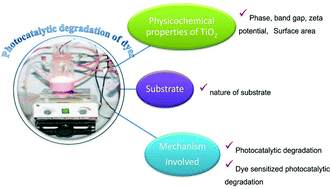Anomalous behavior of visible light active TiO2 for the photocatalytic degradation of different Reactive dyes
Abstract
Nanocrystalline undoped, N-doped, N and metal codoped titania with different particle size, surface area, anatase phase content, crystallinity, band gap and zeta potential were synthesized by the sol–gel method. The photocatalytic activities of the synthesized TiO2 powders were compared by employing four different Reactive dyes. The order of photocatalytic activity observed for Reactive Red 198 dye (RR 198) was undoped = N,Cu codoped = N-doped > N,Fe codoped TiO2, Reactive Blue 4 dye (RB 4) was N,Cu codoped > N,Fe codoped > N-doped > undoped TiO2, Reactive Black 5 dye (RB 5) was N,Cu codoped* > undoped > N-doped > N,Fe codoped TiO2 and negligible degradation was observed for Reactive Orange 16 dye (RO 16). In this paper, the anomalous trend of the photocatalytic activity of various photocatalysts for the degradation of a particular class of dyes has been observed and accounted for based upon three parameters: mechanism of degradation, physicochemical properties of the catalyst and adsorption behavior based on the zeta potential. It was concluded that apart from these parameters, the substrate-specificity of the catalyst is also of equal importance in developing new catalysts for the photodegradation of dyes present in textile effluents.


 Please wait while we load your content...
Please wait while we load your content...